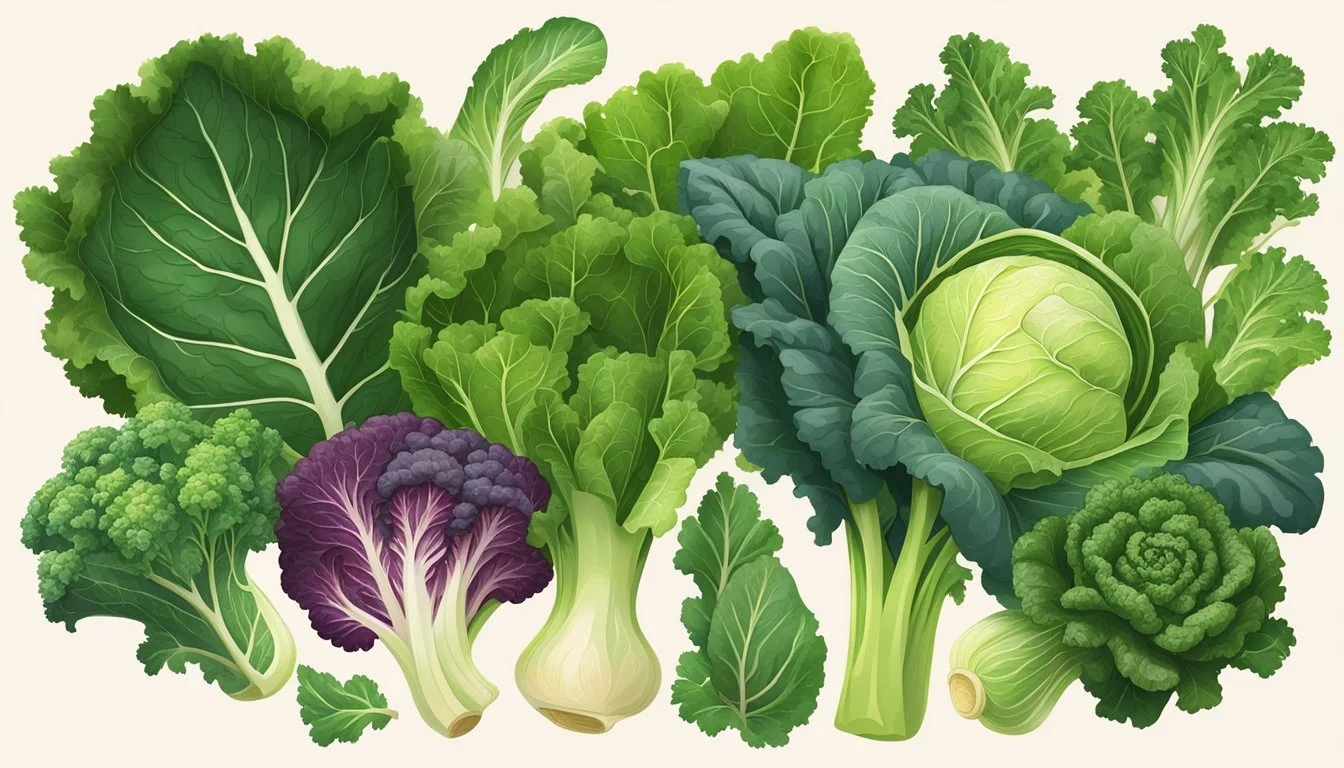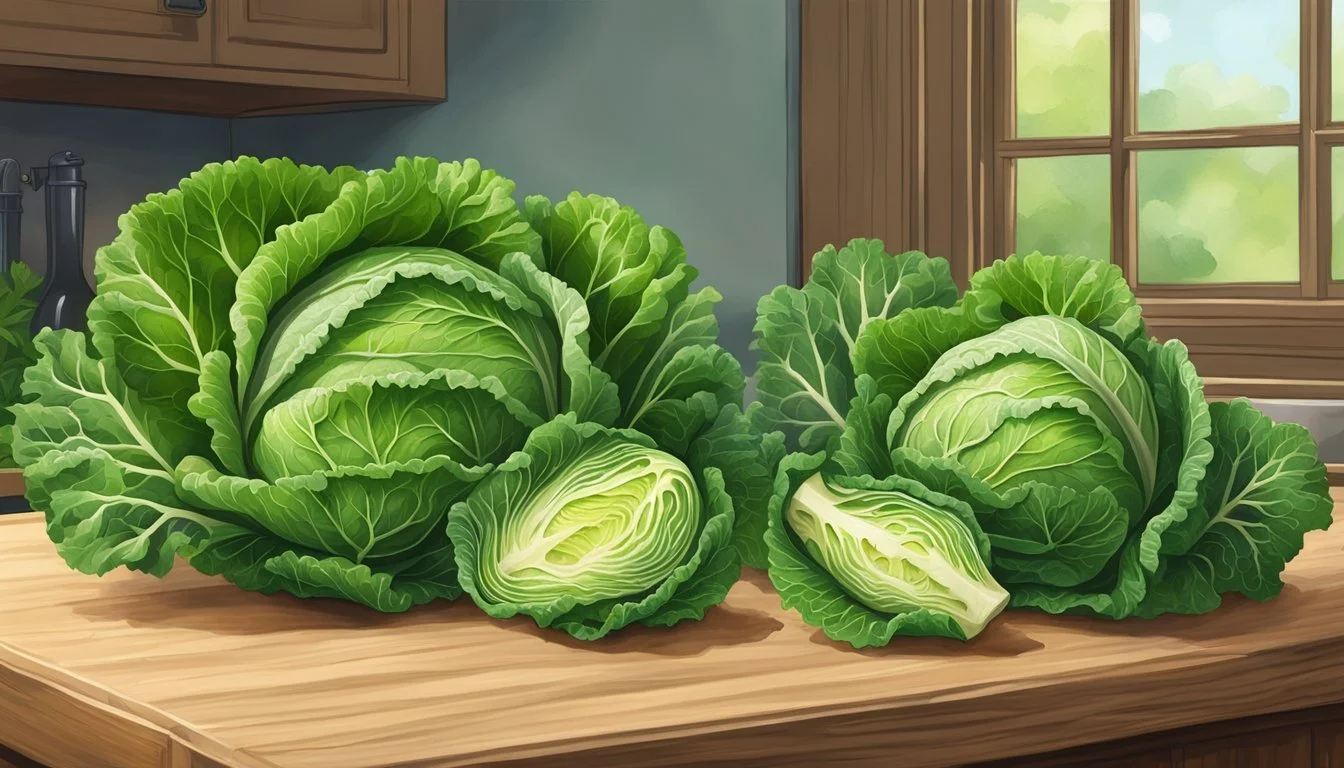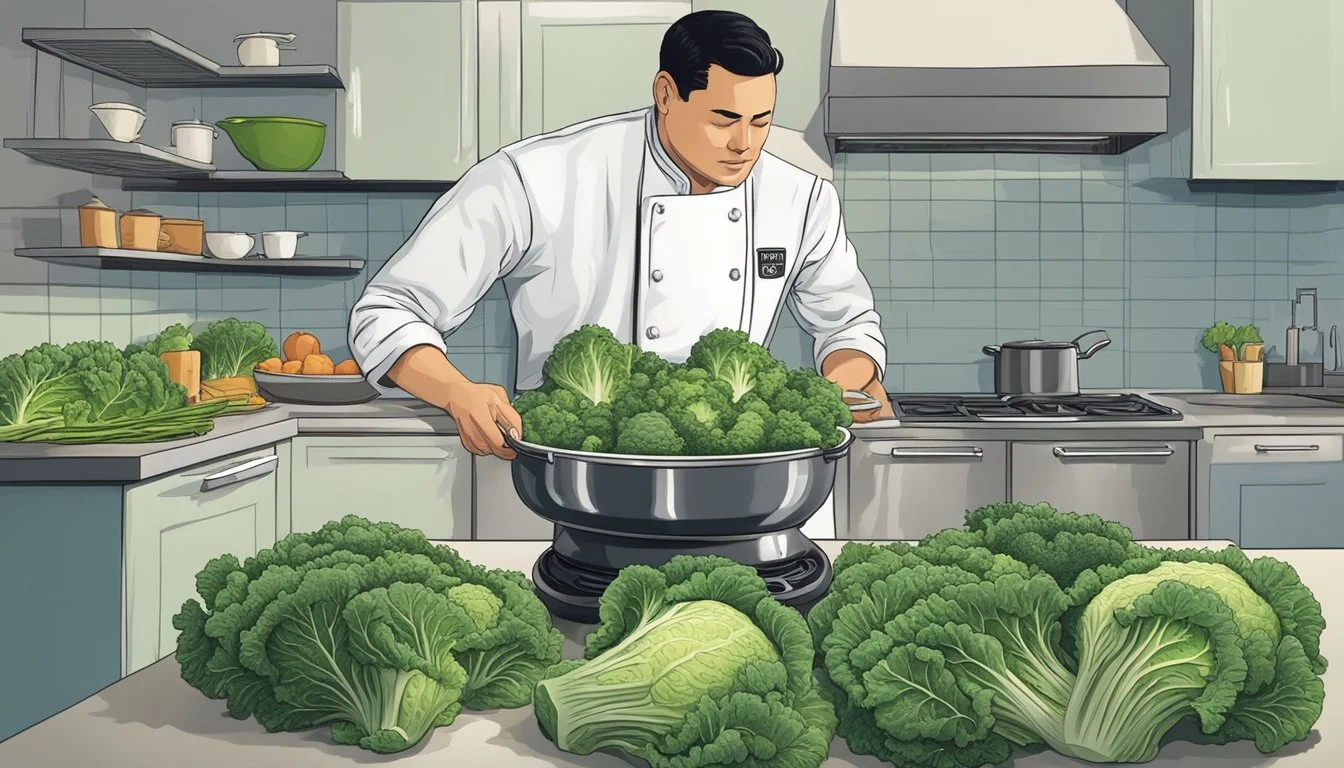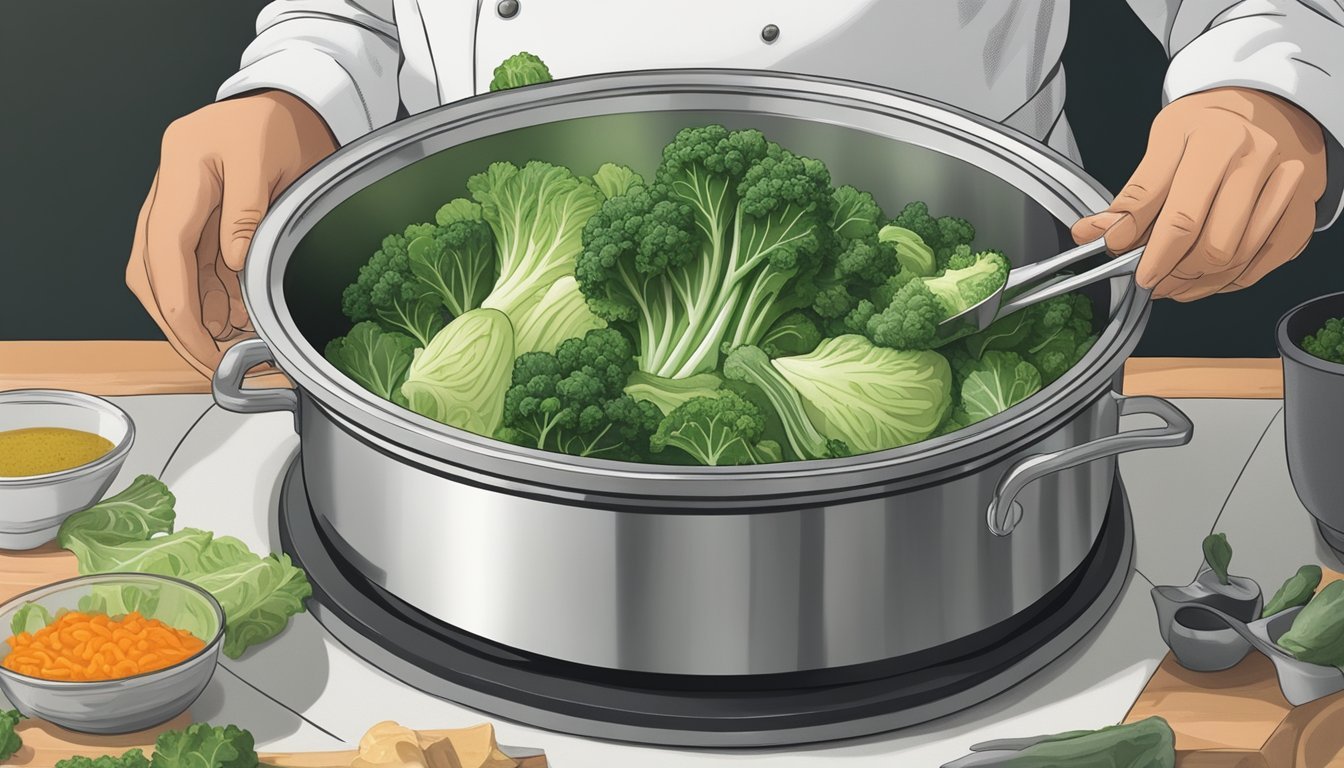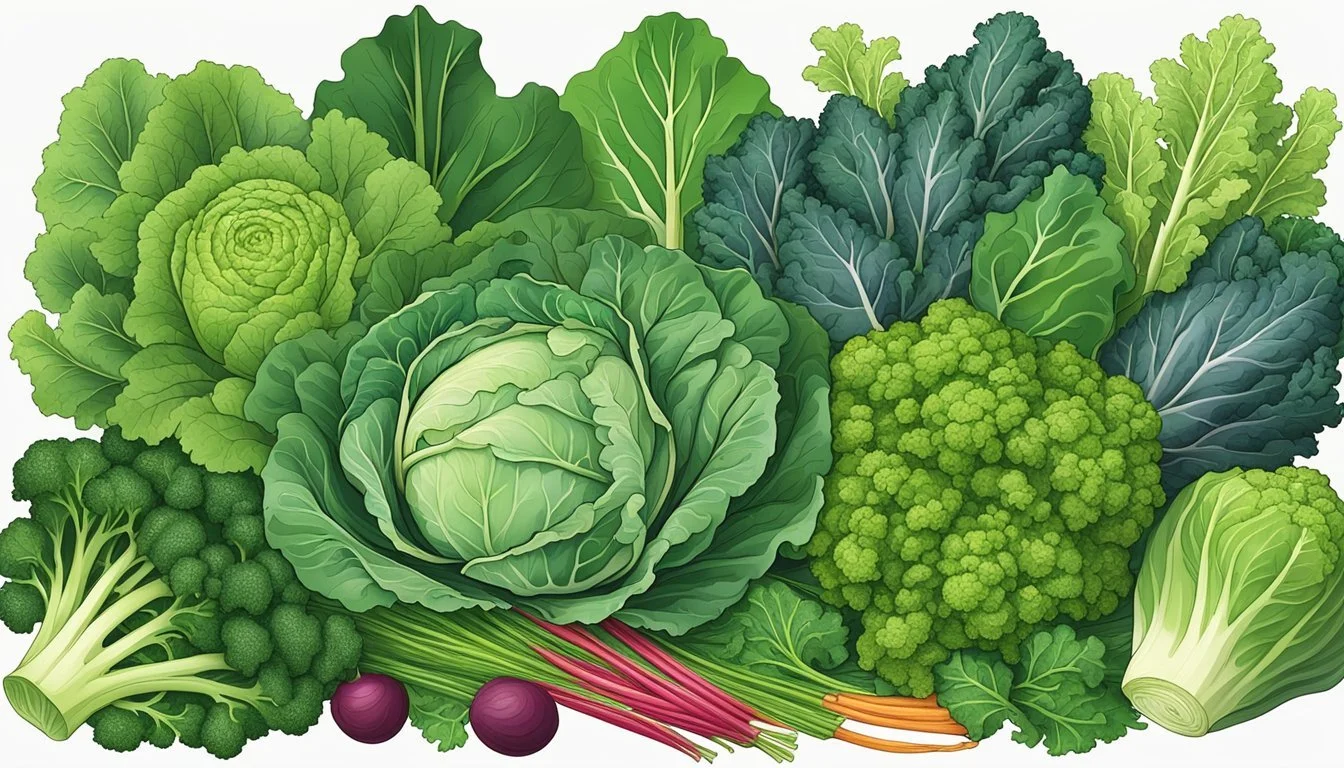Savoy Cabbage Substitutes
Top Alternatives for Your Recipes
Savoy cabbage is a variety of cabbage known for its crinkly leaves and mildly sweet taste, making it a favorite in various culinary traditions. While it lends a unique texture and flavor to dishes, situations arise where an alternative is needed. Chefs and home cooks may seek substitutes for Savoy cabbage due to availability issues, flavor preferences, or dietary needs. Identifying the right substitute is key to maintaining the integrity of the dish since not all cabbages or leafy greens offer the same characteristics.
There are several viable substitutes for Savoy cabbage that can be used across a spectrum of recipes. Napa cabbage, with its mild flavor and tender leaves, serves as a close match, especially in recipes where a delicate texture is preferred. Green cabbage is another option, readily available and capable of holding up well in cooked dishes. For those seeking variety or a slightly different nutrient profile, vegetables like bok choy, Swiss chard, or spinach may also offer desirable qualities as replacements, allowing the cook to adapt to the needs of the recipe while still delivering delicious results.
Understanding Savoy Cabbage
In the realm of leafy greens, Savoy cabbage distinctly stands out due to its crinkled leaves, rich nutritional profile, and a flavor that sets it apart from other cabbage varieties.
Physical Characteristics
Savoy cabbage is easily identifiable by its appearance: it exhibits a round head with a characteristic pattern of crinkled or wrinkled leaves. These leaves are arranged in a compact cluster, similar to other cabbages, but the texture and the ruffled edges give Savoy its unique look.
Nutritional Profile
Savoy cabbage is a nutrient-dense vegetable offering a wealth of vitamins and minerals. Primarily, it's a significant source of vitamin C, vitamin K, and folate. Additionally, it provides dietary fiber, potassium, iron, and calcium.
Nutrient Benefit Vitamin C Supports immune function Vitamin K Essential for blood clotting Folate Aids in cell growth Potassium Regulates fluid balance Fiber Promotes digestive health
Flavor and Texture
The flavor profile of Savoy cabbage is mildly earthy and notable for its delicate flavor that's considered mildly sweet compared to its cabbage counterparts. Its texture is tender, making it versatile in both raw and cooked applications, gracefully incorporating into a myriad of dishes without overpowering with bitterness.
Common Uses in Cooking
When employing substitutes for Savoy cabbage in cooking, it's important to match the texture and flavor profile to the dish's requirements. Whether used raw or cooked, different substitutes align with various cooking methods to yield comparable outcomes.
Salads and Slaws
Savoy cabbage is often shredded for crisp and crunchy textures in salads and slaws. For a similar effect:
Napa cabbage is an excellent 1:1 substitute, bringing a slightly sweeter taste to salads.
Kale and collard greens, with earthier flavors, can be softened for slaws.
In coleslaw, vibrant red cabbage adds a pop of color and a firmer texture.
Savoy Cabbage in Soups and Stews
In soups and stews, Savoy cabbage contributes a tender yet robust structure:
Napa cabbage and Bok Choy can also withstand the simmering process, mimicking Savoy's sweet notes.
For heartier recipes, kale or collard greens provide durability and a depth of flavor.
Incorporate these substitutes during the boiling phase for them to absorb the broth's flavors thoroughly.
Roasted and Sautéed Dishes
The versatility of Savoy cabbage extends to roasted and sautéed dishes, where it can be:
Roasted to bring out a smoky, charred sweetness.
Quickly sautéed for a side dish with a delicate texture.
To replicate these techniques:
Swiss chard offers a similar resilience when roasted.
Both Napa cabbage and Bok Choy perform well when sautéed, maintaining a satisfying crunch.
Savoy Cabbage Substitutes
When looking for substitutes for Savoy cabbage, it is important to consider flavor, texture, and how the alternative will perform in the intended recipe. This section provides options across different categories, including similar cabbages, other cruciferous vegetables, and leafy greens.
Green Cabbage Variants
Green Cabbage: A classic substitute, green cabbage is more widely available and can be used in a 1:1 ratio for Savoy cabbage. Its texture becomes tender when cooked, making it suitable for a variety of dishes.
Napa Cabbage: Also known as Chinese cabbage, Napa cabbage presents a sweeter taste and softer leaves, excellent for salads and stir-fries.
Red Cabbage: While it boasts a vibrant color and a slightly different flavor profile, red cabbage can replace Savoy cabbage, especially when cooked, as its color may dye other ingredients.
Other Cruciferous Vegetables
Kale: Kale offers a hearty texture and a slightly peppery flavor that pairs well with savory dishes. It holds up well in cooking, similar to Savoy cabbage.
Brussels Sprouts: While they may require more prep work due to their shape, Brussels sprouts can impart a similar depth of flavor to dishes as Savoy cabbage.
Broccoli: For a textural change that still brings the essence of cruciferous vegetables, broccoli can be a good alternative, especially in cooked dishes.
Leafy Green Alternatives
Spinach: Easily found and quite versatile, spinach can replace Savoy cabbage in dishes where wilting is desirable, such as soups and stuffed rolls.
Swiss Chard: With its tender leaves, Swiss chard works as a good stand-in for Savoy cabbage and can contribute similar nutritional value.
Collard Greens: These are sturdy enough to be used in cooking methods requiring longer durations, like braising, and they offer a mild but distinct flavor.
Romaine Lettuce: For raw preparations, romaine lettuce's crisp texture makes it an acceptable substitute, though it is less robust than Savoy cabbage when cooked.
By considering these alternatives, you can confidently substitute Savoy cabbage in your recipes without compromising on taste or texture.
Special Considerations
When selecting a substitute for Savoy cabbage, one must consider dietary restrictions, potential allergies, and the availability of alternatives. These factors ensure that the chosen substitution aligns with health considerations and is accessible.
Dietary Restrictions and Allergies
Substitutes for Savoy cabbage should be chosen with an awareness of dietary restrictions. For example:
Gluten-free diets: All suggested substitutes—such as collard greens, Napa cabbage, kale, and red cabbage—are naturally gluten-free.
Allergies: Some individuals may experience cross-reactivity allergies. If one is allergic to cruciferous vegetables like Savoy cabbage, all similar substitutes should be avoided.
Availability and Seasonality
The availability of each substitute may vary by location and season:
Supermarkets: While collard greens and kale are commonly stocked year-round, Napa cabbage might have limited availability outside of Asian supermarkets.
Seasonality: Savoy cabbage is often available in the cooler months. Alternatives like red cabbage also share this seasonal trend.
Check local markets or stores for the fresh produce selection and consider pantry alternatives. Availability does impact not just the accessibility but also the potential health benefits, as fresher produce can provide a richer nutrient profile beneficial to one's immune system.
Incorporating Substitutes into Recipes
When substituting for savoy cabbage in recipes, it's important to consider both the flavor and texture of the alternatives to achieve the desired outcome in dishes that originally call for this ingredient.
Adjusting for Flavor and Texture
Substitutes for Savoy Cabbage:
Napa Cabbage: Offers a milder flavor and crisper texture, ideal for stir-fries or stuffed cabbage dishes.
Collard Greens: Provide a heartier texture and slightly bitter taste, which softens upon cooking; excellent for hearty stews.
Green Cabbage: A readily available substitute with a stronger flavor; works well in dishes that are boiled or steamed.
Spinach: Adds a delicate flavor and softer texture, best added at the end of cooking to avoid over-wilting.
Table 1: Substitutes for Savoy Cabbage and Their Cooking Adjustments
Substitute Flavor Texture Best Used In Napa Cabbage Milder, slightly sweet Crisp Stir-fries, rolls Collard Greens Slightly bitter, can be nutty when cooked Hearty Stews, braised dishes Green Cabbage Stronger, peppery flavor Dense, crunchy Boiled/steamed dishes Spinach Delicate, mildly sweet Soft Quick-sautéed dishes
Substitutes should be chosen based on how closely they mimic savoy cabbage's mildly sweet and slightly nutty flavor and tender yet crisp texture. The goal is to maintain the integrity of the original recipe while using an alternative that will complement the other ingredients.
Substitutions in Traditional Dishes
Stuffed Cabbage Recipes: For dishes like stuffed cabbage, which require the leaves to envelop a filling, substitutes should be pliable and sizable. Green cabbage can be steamed to soften for wrapping around meat or rice mixtures.
Kimchi: Traditionally made with napa cabbage due to its sweetness and crispness, this substitute can also be used when savoy cabbage is not available, maintaining the dish's distinct flavor profile and texture.
Table 2: Substitutes in Traditional Dishes
Dish Substitute Preparation Note Stuffed Cabbage Green Cabbage Steam to soften Retains the structure for stuffing Kimchi Napa Cabbage Raw, fermented Preserves the traditional taste and crunch
By careful selection of substitutes and mindful preparation, the essence of the savoy cabbage can be retained in recipes even when it is not available.
Conclusion
When traditional Savoy cabbage is not available, cooks have a variety of cabbage substitutes to consider, each bringing a unique texture and flavor profile to dishes.
Napa cabbage is an excellent alternative, with its similar crisp texture and mild sweetness. It can be used in a 1:1 ratio for Savoy in recipes such as stir-fries and cabbage rolls. Another substitute, bok choy, provides a crisp, slightly peppery bite that is ideal for Asian-inspired dishes.
For those seeking a more colorful presentation, red cabbage offers a vibrant hue and a more pronounced flavor, suitable for raw preparations like salads. Conversely, white cabbage serves well for cooking, given its robust structure which holds up well to heat.
For a leafier texture, Swiss chard and spinach are viable options. They wilt down significantly when cooked and are best used when a softer texture is desired.
In summary:
Napa cabbage: best for stir-fries and similar to Savoy.
Bok choy: crisp, suitable for Asian recipes.
Red cabbage: colorful, ideal for salads.
White cabbage: sturdy, good for cooked dishes.
Swiss chard/Spinach: leafy, softer when cooked.
Each substitute provides a culinary solution that maintains the integrity of the original dish, while potentially introducing new flavors and textures. Cooks should select an alternative based on the desired outcome of their dish, considering factors such as texture, flavor, and visual appeal.

